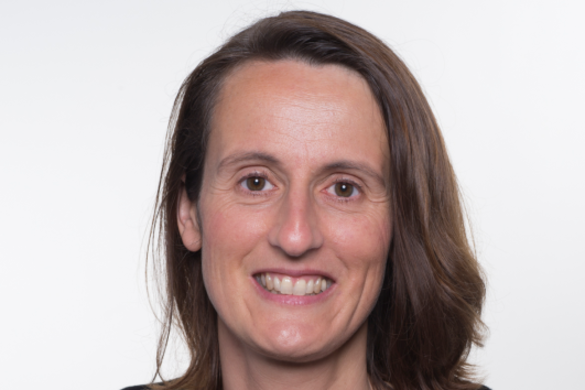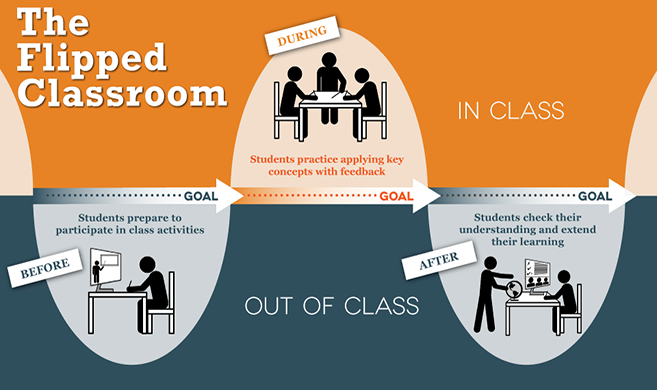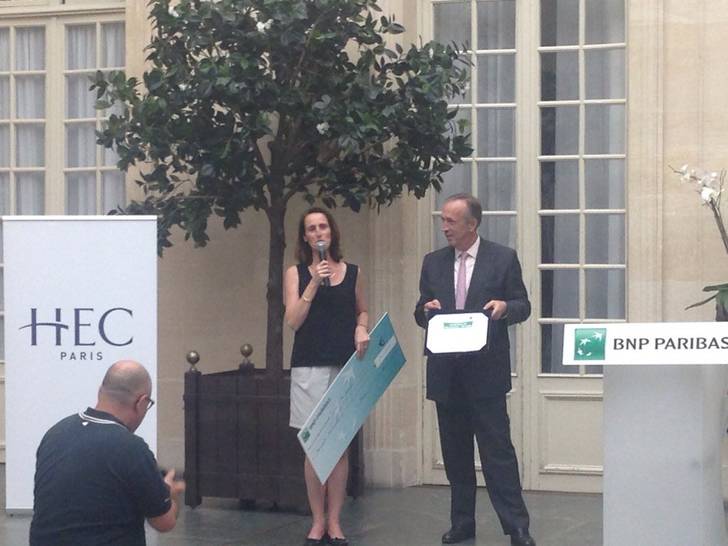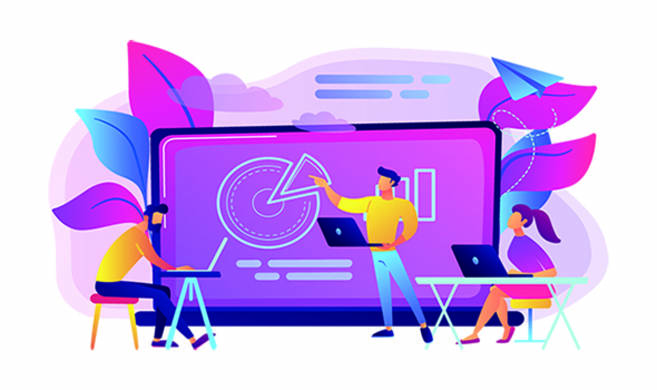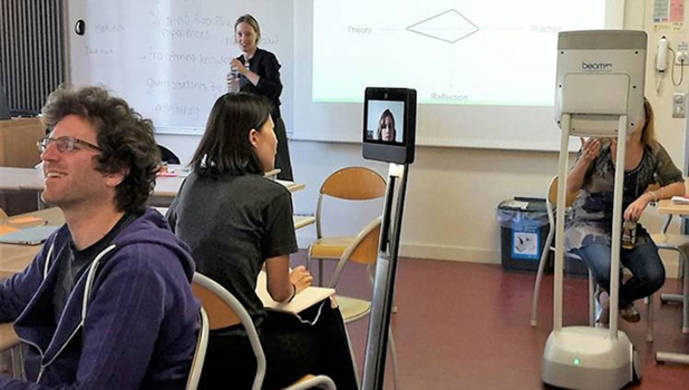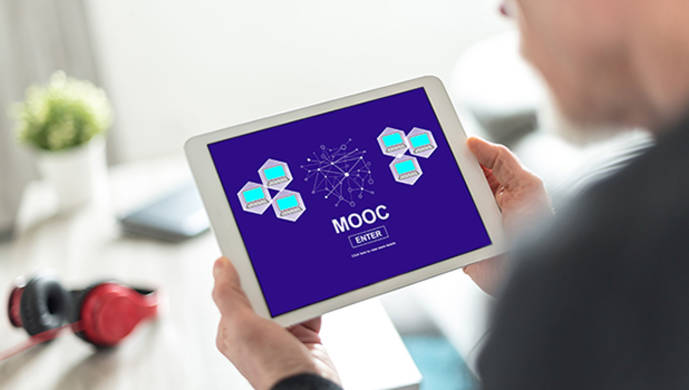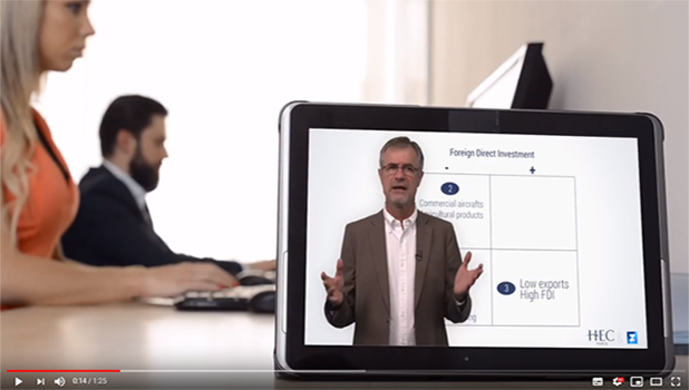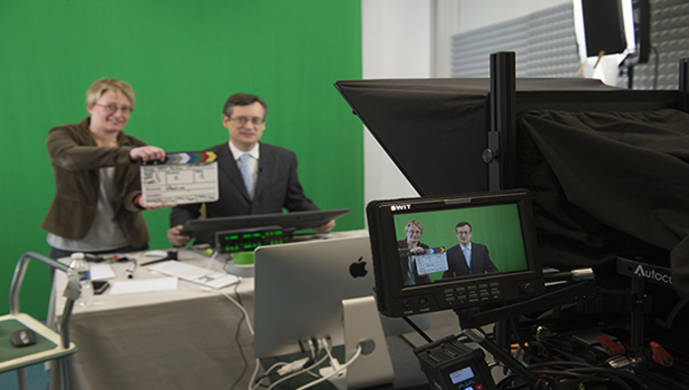Caroline Meriaux, Digital Learning team: For which reasons did you want to change the pedagogy of your course?
Pascale Defline: For several reasons in fact. The first one is that students, no matter how interested they are in a course, are relatively passive with a classic pedagogy. Even if we manage to bring interactivity with questions and making them do some exercises during the sessions, they are here to receive what the professor gives, the course content or answers to the exercises. With a new teaching format, I wanted to make students much more active during the class, with the objective of making the covered concepts stay in their mind long after the final exam!
The second reason is that I think the flipped classroom methodology corresponds much more than a classic pedagogy to what students will go through in the work place. If they need to go deeper on a specific topic or to clarify a tricky question in their professional life, they will look into a handbook, a website or ask an expert and will study the subject on their own, from a theoretical point of view. Then, in a second step, they will put into practice with their colleagues or co-workers what they have learned: it's the same idea with the flipped classroom methodology.
Finally, a third reason is that I was starting to get tired of doing the same course for many years, with the same format. I needed change, a new challenge.
I wanted to make students much more active during the class, with the objective of making the covered concepts stay in their mind long after the final exam!
How did you proceed to flip your course content?
The "Accounting 2" course is composed of 12 sessions of one and a half hour each (18 hours in total), the first one being a refresher and the last one with a guest speaker. Therefore, I had 10 sessions to flip.
For these 10 sessions, I wanted students to work on the basis of videos where I would present the different concepts and notions. When you do a live presentation, in a classic teaching setting, it is always possible to go back to a previous slide or re-explain a concept. But giving that the material is kind of static in videos, the sequence of new concepts, explanations and given examples must be close to perfection! So I had to revise my whole presentation used in class, weighting each word, picking them carefully, to have sequences that were as logical as possible. It was in the end a very interesting project where I constantly have to put myself in the student's shoes since there will be no more interaction when he/she will be learning the course. A real call into question of everything I usually do!
Once this work done, I cut the course into small sequences, each one covering a specific notion, in order to have one video per notion. Then, I filmed 29 videos with the Ubicast solution. The duration of the videos varies between 3 to 15 minutes. This work was kind of fun, with some bursts of laughter! I had made the choice of not having a prompter and I could feel the tension increasing toward the end of the video, especially when for long videos: no mistake allowed so close to the end!
I also created 10 MCQ, with 5 questions each. Students had to take them after watching the videos. The aim of these MCQ was to cover the key concepts studied in the videos.
A real call into question of everything I usually do!
Learn more about what is a flipped classroom in this video made by the University of Texas.
How much time did it take you?
It's difficult to say as the work was spread over several months. Let's say a few weeks on the content and 10 half days for the videos. We also need to add more time for creating the MCQ and uploading all the material on Blackboard. It takes quite some time the first time because you need to manage the adaptive release for all the videos and quizzes. However, for the following semesters, you simply copy/paste the material and adjust the dates.
What were the results and feedback from the students?
Students are very happy. They appreciate the possibility of working at their own pace, whenever they want. They also like working in groups a lot, explaining to each other what they have not well understood. Moreover, the explanations I give in class are generally more personalized.
The assessment has also changed and they are more satisfied with it. Before, they only had a final test. Now it's more balanced since it is composed of the online quizzes, the in-class case studies (I pick up all of them but only grade 2 per session, of course without telling students which ones) and a final test. The final grades are overall better, even if we still have some students who don't validate the course. These ones will have the pleasure of going through the flipped classroom methodology again!
Students appreciate the possibility of working at their own pace, whenever they want. They also like working in groups a lot, explaining to each other what they have not well understood. Moreover, the explanations I give in class are generally more personalized.
See on Twitter here.
